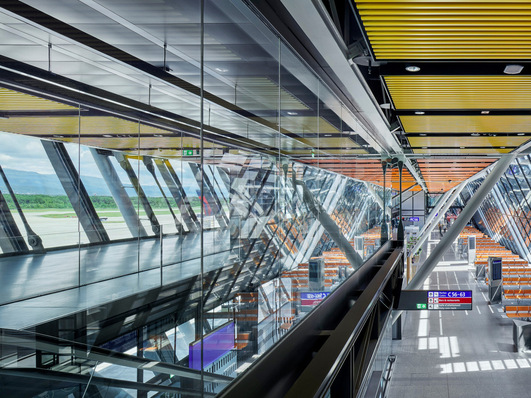ISO providers in Italy use maxi formats too, take Roberto Pastore for instance, the owner of Vetrodomus in Brescia. His company has been active on the market for more than 50 years and specialises in glazing for façades and shipbuilding and now oversize formats too. Read on to find out why he uses a “No Limits” ISO line from Forel.
With more than 70 employees Vetrodomus now specialises in the manufacture of façade glazing, but this is a hard-fought market. “We had to boost our productivity,” explains owner Roberto Pastore, “that’s why we’ve added to our two existing lines with a new insulating glass line for oversize formats.” (www.vetrodomus.it)
Pastore's priority was to have a powerful new system which could support heavyweight maxi units of considerable thickness. This was also to be used to manufacture large tiered insulating glass.
“We wanted to invest and expand our range when it came to formats, so we opted for the ‘No Limits’ from Forel. This was a very carefully considered choice and one which proved to be the right one. We have been using the line for a number of months now and already it has proven its worth. It has also given us access to some very important contracts.”
The “No Limits” from Vetrodomus processes glazing of up to 6000 × 3300 mm. It can handle individual panes of up to 350 kg/rm and manufacture ISO units weighing up to 550 kg – and that for glass thicknesses of up to 40 mm for individual panes and 100 mm for the ISO units. It can produce oversized triple insulating glazing too. Each station on the line has been specially designed for handling maxi formats, these include the decoater (Art. CRP), the washing machine (Art. VW), the inspection station and the framesetter (Art. LCFP), as well as the press with gas filling function (Art. APG) and the sealing robot (Art. SRHP).
Udo Hornung talks demand
In response to the question of when it’s worth investing in a “No Limits” ISO line, Udo Hornung, who represents Forel in the German-speaking region and takes care of technical service there, replies as follows: “At least 40 to 50 % of the (insulating) glazing manufactured with it should be oversized. For me oversized formats begin at 2m2. When it comes to window glazing, formats only average between 0.8 and 1.3 m2.
Lines for oversized formats in particular usually have a very high degree of automation, with this frequently depending on the spacers used. For conventional spacer frames the degree of automation is generally lower than for spacers from the roll or from the drum. A higher degree of automation is possible for the latter. With the ‘No Limits’ line from Forel you always have the option of two systems, in addition to roll or drum goods you can always use conventional frames.”
Hornung goes on to explain that façade glazing is often requested with large tiers. “With the No Limits system, tiers of up to 250 mm can be installed around the entire circumference. This allows us to cover 90 % of tier requests received. Special unloading units allow the processor to handle glass panes like this easily during unloading.”
Edge processing can also be integrated in the line. This is also something which glass processors seem to be asking for more and more frequently.—
www.pro-glas.at
www.flachglas.de













